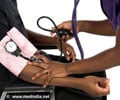Stroke death rates are three times higher in the poorer regions of the UK, particularly in England and Wales, a study shows.
Stroke death rates are three times higher in the poorer regions of the UK, particularly in England and Wales, a study by the British Heart Foundation and Stroke Association has shown.
The two charities used death rates broken down by local authority areas to compare the least deprived 5% with the most deprived.The stroke mortality rate for men and women of working age (under 65) has fallen consistently since the late 1970s. However the rate has fallen quicker in adults of higher social classes, resulting in an increase in inequalities in stroke death rates.
The social gradient in stroke deaths is clearly demonstrated when mortality rates from areas of differing deprivation are compared. The data shows that stroke mortality increases with deprivation for both men and women. For premature mortality, the rate in the most deprived twentieth of England and Wales is over three and a half times higher for men, and over two and a half times higher for women.
There were 29 deaths per 100,000 men under 65 each year in the poorest areas compared with just eight in the wealthiest. For women, the gap was less at 17 per 100,000 in the most deprived and six in the least.
The statistics also show that people from lower social economic backgrounds are more likely to face major risk factors of stroke.
For example, cigarette smoking is more prevalent among manual social groups and people from households with lower incomes are more likely to be obese. However, it is not just people from lower income households who are at risk of stroke. This document shows that people in managerial and professional jobs are more likely to binge drink and drink alcohol on five or more days a week. People who regularly consume a large amount of alcohol have a three-fold risk of stroke.
Advertisement
Professor Peter Weissberg, Medical Director at the British Heart Foundation said: "The picture these data on stroke present strongly mirror figures for heart disease, which is also much more common in deprived communities. Many of the risk factors for heart disease and stroke, such as smoking and high blood pressure, are the same and potentially modifiable. The statistics argue for a concerted effort to identify and modify risk factors, by lifestyle and drug interventions, in those communities with the highest risks. We don’t underestimate the challenge this poses, but success will save the lives of thousands of people and prevent disability in many more."
Source-Medindia
GPL













